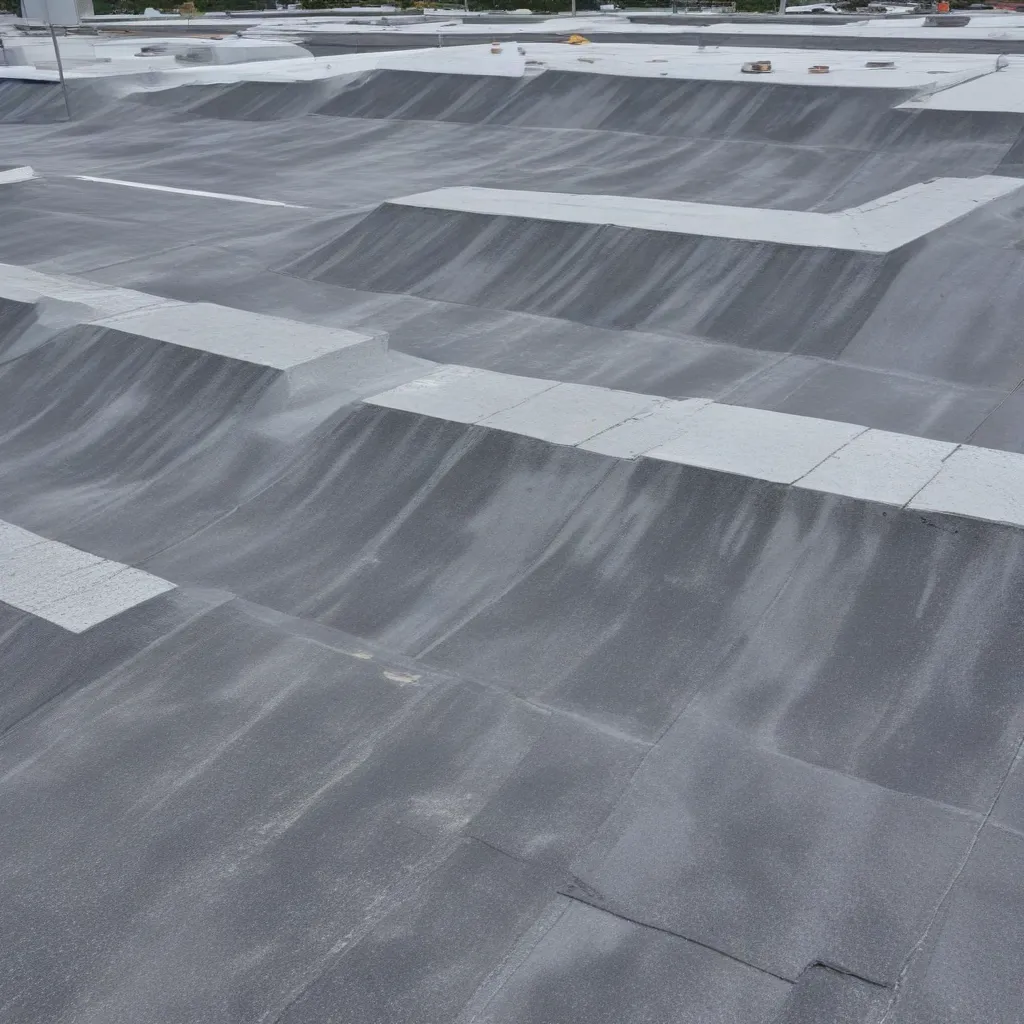
Weatherproofing Strategies for Commercial Roofs: Protecting Against the Elements
When it comes to safeguarding commercial properties, the roof stands as the first and most crucial line of defense against the whims of Mother Nature. From heavy downpours to scorching heat, the roof must withstand a constant barrage of environmental stressors to keep a building’s occupants and contents dry and secure. As a seasoned roofing specialist for Genuine Roof Systems, I’m here to share proven weatherproofing techniques that can help you fortify your commercial roof against the elements.
Roof Membrane Selection
The roof membrane – the outermost protective layer – plays a pivotal role in a building’s weatherproofing capabilities. Choosing the right membrane material is essential, as it directly impacts the roof’s durability, water resistance, and long-term performance.
Bituminous membranes, made from a blend of asphalt and other bituminous materials, offer excellent waterproofing properties, especially when combined with a gravel surfacing. These traditional roofing systems excel in regions with heavy rainfall, like coastal cities, thanks to their ability to create a seamless, impermeable barrier.
Alternatively, thermoplastic membranes such as PVC (polyvinyl chloride) and TPO (thermoplastic polyolefin) have gained popularity for their superior resistance to UV radiation and chemical exposure. These lightweight yet durable options are well-suited for commercial buildings in harsh climates, where they can maintain their structural integrity and prevent premature degradation.
For building owners seeking a more eco-friendly solution, EPDM (ethylene propylene diene terpolymer) rubber membranes provide a viable option. EPDM’s inherent flexibility and weatherability make it a smart choice, particularly when paired with liquid waterproofing coatings that can further enhance its lifespan.
Evaluating the performance characteristics of these membrane materials, in light of your commercial building’s unique needs and location, is crucial for selecting the most appropriate weatherproofing solution.
Roof Insulation Systems
Effective insulation plays a dual role in protecting commercial roofs – it not only enhances thermal efficiency but also helps manage moisture, a critical factor in maintaining a weathertight envelope.
Thermal insulation solutions, such as rigid foam boards or sprayed-in-place polyurethane foam, help regulate indoor temperatures, reducing the energy demands required for heating and cooling. By minimizing heat transfer through the roof, these insulation systems can significantly improve a building’s overall energy performance.
Equally important is the management of moisture. Proper insulation, combined with strategic vapor barriers and ventilation systems, can effectively mitigate the risk of condensation buildup within the roof assembly. This proactive approach prevents the development of mold, mildew, and other water-related issues that can compromise the structural integrity of the roof.
Advanced air sealing techniques, such as the installation of soffits and ridge vents, ensure that the roof assembly maintains a continuous, weathertight barrier. This integrated approach to insulation and ventilation optimizes the roof’s ability to withstand the elements while promoting energy efficiency.
Flashing and Sealant Applications
No matter the quality of the roof membrane or insulation system, the success of a weatherproofing strategy ultimately hinges on the proper integration of flashing and sealants – the unsung heroes of roof system performance.
Flashing, the strategically placed metal or membrane components, play a crucial role in directing water away from vulnerable areas, such as roof penetrations, edges, and transitions. Careful flashing design and meticulous installation ensure that water is efficiently channeled off the roof, preventing leaks and water damage.
Complementing the flashing, sealants create a tight, flexible barrier at critical junctures, forming a seamless weathertight seal. The selection of the right sealant material, be it silicone, polyurethane, or acrylic, depends on factors such as expected movement, exposure to UV, and compatibility with the surrounding roofing components.
Ensuring the proper application of flashing and sealants, with attention to detail and manufacturer specifications, is essential for maintaining the integrity of the entire roof system. Regular inspections and timely repairs of these critical elements can make the difference between a watertight commercial roof and one plagued by costly leaks and water damage.
Preventative Maintenance Practices
Weatherproofing a commercial roof is not a one-time endeavor; it requires a proactive, long-term approach to maintenance and renewal. By adhering to a comprehensive preventative maintenance plan, building owners can extend the lifespan of their roof system and safeguard their investment against the elements.
Routine inspections are the foundation of this approach. Qualified roofing professionals should be engaged to conduct regular assessments, identifying potential problem areas before they escalate into major issues. These inspections should examine the overall condition of the roof membrane, flashing, sealants, and drainage systems, allowing for targeted repairs and preemptive measures.
When issues are discovered, prompt remediation is crucial. Addressing minor leaks, blistering, or membrane deterioration in a timely manner can prevent them from evolving into larger, more expensive problems. Regular maintenance not only preserves the weatherproofing integrity but also enhances the overall aesthetic and curb appeal of the commercial property.
Alongside these proactive measures, building owners should consider planning for periodic roof system renewal. Depending on the roof’s age, materials, and environmental exposure, a comprehensive re-roofing or resurfacing project may be necessary to ensure long-term durability and performance. By staying ahead of the curve, property managers can avoid costly emergency repairs and maintain a weathertight commercial roof for years to come.
At Genuine Roof Systems, we understand that weatherproofing a commercial roof is a multifaceted challenge – one that requires a harmonious blend of high-quality materials, expert installation, and diligent maintenance. By implementing the strategies outlined in this article, you can fortify your commercial property against the unpredictable forces of nature and safeguard your investment for the long haul.
For more information on our innovative roofing solutions and weatherproofing expertise, please visit https://www.genuineroofsystems.com. Our team of dedicated professionals is here to help you navigate the complexities of commercial roof weatherproofing and ensure your building remains a secure, dry, and energy-efficient haven for your business.

























